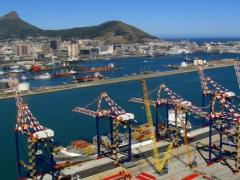The ferrochrome sector brings into sharp relief South Africa’s chromite reserves, especially in relation to Energy Minister Dr Kgosientsho Ramokgopa’s recent presentation: ‘Global and Domestic Energy Complex in Context’.
Considering that about 70% of the globe’s ferrochrome reserves are here in South Africa, Ramokgopa’s presentation highlighted the structural energy challenges facing South Africa.
It also set out a series of interventions aimed at stabilising energy-intensive industries, says Kgothatso Nkgadima, analyst at XA Global Trade Advisors (Xagta).
“Ferrochrome output fell by more than 8% between 2018 and 2024, and China now leads global production,” she says.
“The tariff paradox has been a central factor since 2008; tariffs have risen 937% versus 155% inflation, leaving South African smelters paying about R2.06/kWh compared with R0.50-R0.73/kWh in competitor jurisdictions, eroding our cost competitiveness and encouraging raw ore exports rather than domestic processing.”
According to Nkgadima, there is a strong policy push for domestic beneficiation but rising electricity costs now threaten that agenda.
“Ferrochrome smelters are continuous-process operations that need dependable, affordable power to operate. Without reform, South Africa risks exporting cheap raw chrome ore while forfeiting billions in value-added ferrochrome production. Already, roughly 86% of world chrome exports originate from South Africa in unbeneficiated form, further weakening local smelters and constraining job creation across the metals value chain. For beneficiation to succeed, ferrochrome producers must receive electricity that is both cost-competitive and reliably supplied.”
To address these challenges, the minister’s report proposed a package of targeted interventions, she points out.
“Key measures include tariff realignment for continuous-process industries (targeted for implementation in November 2025), repurposing selected Eskom plants with circulating fluidised bed combustion technology coupled with long-duration energy storage, introducing chrome ore export controls and export taxes to secure domestic feedstock, and expanding Special Economic Zone support for smelting operations. These interventions were presented as a coordinated effort to restore competitiveness, secure feedstock for local smelters, and safeguard beneficiation as a central industrial policy objective.”
Nkgadima emphasises that the lack of timely implementation of Ramokgopa’s measures, the combination of high power costs, unreliable supply, and skewed incentives will continue to push beneficiation in the wrong direction, which is toward greater raw-ore exports and lost value-addition, investment and jobs.
“What is required is restoring efficient, affordable and reliable power for continuous-process industries. It is therefore not just an energy sector priority; it is an essential condition for realising South Africa’s beneficiation ambitions and securing long-term industrial and employment benefits across the chrome value chain.”













